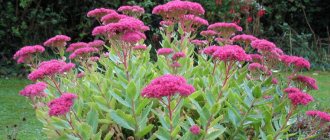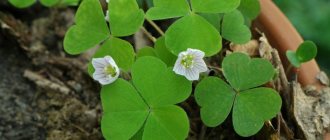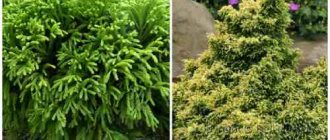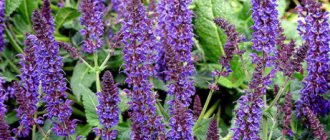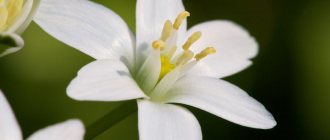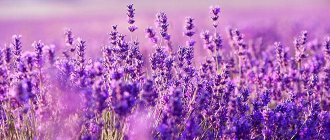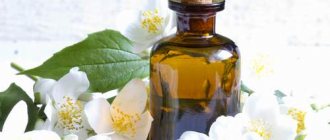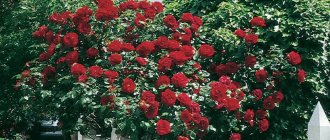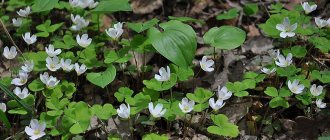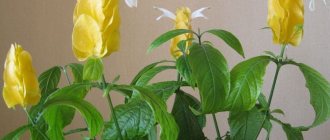Vegetable growing » Cabbage
1
1591
Article rating
Kira Stoletova
Hare cabbage is a perennial plant belonging to the Crassulaceae genus. It grows on sandy soils. You can find cabbage near bodies of water, along roads, where it merges with bushes.
Medicinal properties of hare cabbage
Characteristics of hare cabbage
Hare cabbage has a tuberous root system. The roots of such a plant are quite thick and dense, which makes it much more difficult to pull the bush out of the ground. The plant is characterized by a tall, straight stem that is cylindrical in shape. The height of the bush can reach 60 cm. Hare cabbage looks like an ordinary bush.
Usually hare cabbage has round or oval leaves of large sizes. There is no roughness observed on their surface. They are completely covered with a thick layer of wax, and on their edges there are small teeth.
Rabbit cabbage has small flowers. There are inflorescences of pink or yellow shades. They consist of several flowers and are located in the upper part of the plant. Flowers are multi-leafed. The plant blooms from early July to August. Hare cabbage is most often found in Europe.
The plant has beneficial medicinal properties.
Botanical description
Hare cabbage is a herbaceous perennial plant belonging to the genus Oxalis, the Oxalis family, reaching a height of ten centimeters. The plant is endowed with thin creeping rhizomes and reddish, scaly, fleshy leaves characteristic of succulents. See photo below.
Flowering occurs at the end of spring. Skripun is endowed with solitary actinomorphic, weakly fragrant small flowers. The fruits are five-lobed light brown capsules with numerous small seeds.
Spruce and coniferous forests, wet forests, banks of reservoirs, streams are places of growth. Far East, Western Siberia, Caucasus, Turkey, North America, Mongolia, China, Russia - habitat.
Application in medicine, everyday life
Skripun is not a pharmacopoeial plant and is not used in traditional medicine. However, the plant is widely used in alternative medicine and homeopathy.
In homeopathy, the essence of the herb is used to treat gastritis with low acidity and dyspepsia. In the medical practice of the Caucasus, the dry foliage of the plant is an ideal remedy in the fight against arsenic, mercury, and paralysis poisoning. Nutritionists advise using the fresh plant to treat anorexia and vitamin deficiency.
Hare cabbage is used in everyday life. It is used for dyeing wool and other materials. The juice of the herb is used in the fight against ink stains and rust.
Varieties of cabbage
There are several types of sorrel (another name for cabbage).
- Purple sorrel is characterized by a pleasant lilac color. The tree grows up to 1 m in height. This garden crop is often grown at home. Caring for it involves timely watering (once a week).
- Wood sorrel has characteristics similar to another variety - common sedum. The difference between them is that the forest variety can only grow in wild conditions (hence the name). The flower of this species is not very large.
- The red variety is more common in Siberia. The height of the bush reaches 60 cm. Flowers are presented in red or pink tones.
- The common sedum is a houseplant that can be grown at home. The best growth is observed in the wild. The height of the bush is about 70 cm. The flowers have a purple tint.
Care requirements
Now about what the indoor oxalis flower will require from gardeners - care at home is not complicated, suitable for beginners. This species loves fresh air, so it is necessary to organize regular ventilation of the room, especially in the summer.
Location and lighting
Purple indoor oxalis can grow in the shade when cared for at home. A suitable place for it would be a western, southwestern or eastern window sill. If there is more diffused light, the brightness of the leaves will increase and there will be more flower stalks.
It is advisable to avoid exposure to direct sunlight to avoid causing burns, especially in red-leaved and purple species. The plant has delicate leaves, so cold drafts are also unacceptable.
Video: Caring for oxalis at home
Temperature
In spring and summer, the suitable temperature range for hare cabbage is 20 to 25 degrees. In winter, the pot must be removed to a cool room so that the flower forms buds for the development of flower stalks. If the plant is kept warm all the time, it will not bloom. The same goes for seeds - they require stratification before sowing.
The dormant period when growing and caring for wood sorrel at home lasts only 6 weeks. A sign of the end of the growing season is massive falling of leaves and drooping stems. If they are dry, they are cut off and the pot is transferred to a cool room with a temperature of 6 to 12 degrees.
Humidity
For oxalis triangularis - triangular hare cabbage - normal room humidity is suitable. This is approximately 65%. If the air is drier, it is recommended to install it near a container with water for evaporation. It is advisable to have a humidity sensor in the house to monitor the indicators
It is also important for people's health
In winter, an additional source of moisture is not needed.
Watering
Oxalis loves water, but moisture should not be allowed to stagnate in the root area. This leads to rotting of the bulbs and death of the root system. In hot weather, water abundantly; before the dormant period, reduce the amount and volume of water. In winter, you need to keep the soil moist and not allow it to dry out.
Spraying daily is necessary if the summer temperature rises above 25 degrees. To avoid damaging the leaves, use boiled, settled water without impurities of calcium and magnesium salts. Soft rainwater will do.
You cannot spray the plant in a cold room in winter.
Soil and pot
Since the rhizome is located in the upper part of the soil, sorrel requires a wide but shallow pot for rapid growth. This way you can get a big beautiful bush.
Hare cabbage is undemanding in terms of soil composition, but it is desirable that the soil be loose - in such conditions the bulbs develop faster.
For abundant flowering, you need organic matter in the form of natural additives - manure, droppings, ash solution. Plant components are food for soil microorganisms that synthesize humus, the main indicator of fertility. Humus affects the looseness and moisture capacity of the soil.
Feeding
Complex mineral fertilizers are used from the beginning of February, since at this time the dormant period of hare cabbage ends. For the first time, apply 1/4 of the dose to stimulate vegetation. Then every 2 weeks it is necessary to water with a nutrient solution half as much as indicated in the instructions.
In the first half of spring, it is necessary to give fertilizers with equal amounts of nitrogen, potassium and phosphorus, then switch to potassium-phosphorus mixtures. If you overdo it with nitrogen, leaves and shoots will grow, but flowering will not occur.
Useful properties of hare cabbage
Sedum or hare cabbage (these are 2 names for the same plant) is characterized by excellent healing properties for the human body.
A plant such as hare cabbage contains vitamins C, tannins, carotene, medicinal salts, various natural acids and flavonoids.
Product benefits:
- helps get rid of pain;
- tones the entire body (after illness or overwork);
- allows wounds to heal as quickly as possible;
- helps stop bleeding;
- thanks to the use of leaves, you can quickly cleanse the skin of various inflammations (pimples or blackheads);
- helps get rid of allergies, which manifest themselves in the form of skin rashes;
- Using the juice will normalize the functioning of the heart and central nervous system.
Hare cabbage, thanks to its rich beneficial composition, is used in folk medicine. Tinctures are used to cure diseases of the gastrointestinal tract (duodenum, ulcers or gastritis), hormonal balance (menstrual irregularities) or diseases of the respiratory system (bronchitis, asthma or pneumonia).
Ointments prepared from finely chopped leaves are used for external treatment. They are used in the fight against osteochondrosis, radiculitis, or various cuts and burns. Rabbit cabbage rubs help normalize the flow of breast milk. This method is especially effective in case of stagnation. Using a decoction of this herb allows you to remove waste and toxins from the body.
Harvesting cabbage
Cabbage is used in folk medicine
In folk medicine there are recipes that use both the above-ground part of the crop and the root.
- The grass should be collected and dried at the moment when the bush just begins to bloom. It is better to collect flowers and leaves in sunny and dry weather, otherwise there is a risk of a decrease in beneficial properties.
- It is better to dig up and collect the roots in early September, when they absorb the maximum amount of nutrients from the soil.
The beneficial properties of hare cabbage are maximally manifested only if the drying is carried out correctly. Typically, it is recommended to dry the green part of the plant in large rooms with good ventilation. Before you start drying the roots, it is important to clear them of soil and top layer, cut them into small slices and hang them on a barn or basement window.
Contraindications to the use of sedum
Only sedum is a poisonous plant, so it should be used for medicinal purposes very carefully. Failure to comply with dosages can cause vomiting, dizziness and even respiratory arrest with cessation of cardiac activity. In severe cases, the person may fall into a coma.
Caustic sedum cannot be used to treat women carrying a fetus, in childhood, with hypertension and nervous diseases.
Hare cabbage infusion
Hare cabbage is often used as a tincture. There are several common recipes.
- About 50 g of crushed leaves should be poured into 500 ml of boiled water. This mixture should be placed in a cool, dark room for 5 hours. After the specified time, the substance is filtered through a sieve or gauze and poured into a clean container. You need to take the tincture 3 times a day, 30 ml before meals. This infusion is believed to be an effective remedy against gastritis, diarrhea, infertility, fatigue or kidney failure.
- You need to mix 25 g of the green part of the grass with 25 g of the root system. This mixture must be poured with 500 ml of boiled water and left in a thermal container for 5-6 hours. This tincture should be used to lubricate sore areas with sore throat, burns, and cuts. This infusion also actively helps get rid of warts, ulcers or calluses.
Use for decorative purposes
Since there are so many types of oxalis, it is actively used for decorative purposes. This is not surprising, since it spreads quickly, covers the soil with a bright carpet, and weeds do not break through it. This plant is not picky, winter-hardy, and ideally complements many projects of landscape designers. Oxalis can even be used when decorating alpine slides or rockeries. The main thing is to distinguish decorative varieties of wood sorrel from rapidly growing weeds and decide what purpose is needed in each specific case.
Note! A very common species for ornamental cultivation is red sorrel. It looks very impressive and emphasizes the greenery of the surrounding plants.
Red sorrel will decorate any landscape design
Hare cabbage decoction
Sometimes hare cabbage is used in the form of a decoction. To prepare it you will need 20 g of dry crushed leaves. They are added to 200 ml of warm water, and the mixture is placed on the stove.
You need to keep the mixture on the fire for no more than 10 minutes, otherwise all the beneficial properties will be destroyed by high temperatures. After the specified time, remove the dishes from the heat and place them in a dark place until they cool completely. After this, it is poured into a clean container. You should consume about 20 ml of the drug, 2-3 times a day. This decoction will be effective in the fight against kidney diseases.
Necessary conditions for cultivation
A perennial herbaceous plant grows naturally in temperate climates in meadows, along roads and mountain slopes. Purple sedum is undemanding to soil fertility and tolerates frost and drought well. The flower can be grown in the garden, country house or balcony, providing it with minimal conditions.
Location and lighting
The area for planting sedum should be well lit. The culture is demanding on the amount of sunlight throughout the day. In the shade of trees, bushes and buildings, it slowly grows shoots and stretches out. The purple color of the petals and abundant flowering are possible only in conditions of maximum illumination. Sedum is planted in open areas. The perennial is not afraid of drafts and winds.
In central Russia it gets by without additional shelter for the winter. In cold climates, it is recommended to insulate the bushes with spruce branches or special covering material.
Air humidity
Sedum grows best in moderate humidity. Wetlands and the proximity of water bodies contribute to the development of fungal diseases and the appearance of root rot. The succulent is able to retain a supply of moisture and do without watering for a long time. The purple flower is more resistant to drought than to excessive moisture in the air and soil. During the rainy season, it needs to loosen the soil to allow oxygen to reach the roots of the plant.
Soil requirements
The key to proper plant development is a loose soil structure with good drainage properties. Fertility and nutritional composition are not of great importance. An unpretentious perennial that can grow in rocky soils and poor, sandy areas. It is undesirable to plant herbaceous crops in dense, clayey soil. For abundant flowering, you can fertilize the soil with humus or compost.
Hare cabbage juice
The green part of the cabbage should be thoroughly washed under running water and pour boiling water over it, leave for 20 minutes. After this, you should make porridge (using a meat grinder or juicer). The resulting juice is mixed with clean water in a ratio of 1:2.
Every day it is recommended to take 1 tbsp. l. juice on an empty stomach, 3-4 times a day. The product is used for external treatment. If there is a wound or inflammation on the face, then a cotton pad should be soaked in juice and applied to the site of inflammation or injury.
Sem. CRASSULACEAE - Sedum acre L.
Sedum is a perennial herbaceous plant with a creeping rhizome, without thickenings. Stems 5-15 cm high, branching from the base, are seated with small thick fleshy sessile ovate leaves. Barren shoots are recumbent, with imbricated leaves arranged in 5-6 rows, flowering shoots are ascending, with leaves more spaced. The flowers are golden yellow, shaped like 5-pointed stars, collected in multi-flowered racemes at the top of the stems; There are 10 stamens, 5 of which are opposite the petals and attached to them. Blooms all summer. Grows on dry sandy, lightly turfed soils on open hillsides and dry meadows. Happens frequently. Distributed in the European part, in the Caucasus. Blanks are possible in large quantities. Sedum contains the alkaloid sedamin, flavonoids, tannins, organic acids, and resin. Pharmacological studies have shown the activity of the herb as a tonic and stimulant of the intestines, relaxing the muscles of the uterus, and increasing blood pressure.
Rabbit cabbage flower
A decoction prepared from the flowers of this plant perfectly helps to cope with general fatigue of the body and improves the tone of the whole body. This is an effective remedy for improving the immune system. The decoction should be consumed 3 times a day, 30 ml. It's better to do this while eating.
Fresh flowers are edible and quite tasty. They help restore the body after a long and complex illness. It has an analgesic and healing effect if applied to a wound or burn.
Reproduction
You can propagate sedum in three ways:
- Seeds;
- Dividing the bush (rhizomes);
- By cuttings.
The most effective method of propagation, which preserves the parental properties of the flower, is division of the plant root. The most difficult method of propagation is by cuttings, which are cut in the fall and transferred for germination to a greenhouse, hotbed or room, but the result can be negative; the likelihood of roots appearing on the cutting is very low. It is better to sow seeds in open ground in the spring at the end of April, beginning of May; for better growth, sand and ash, peat, and sawdust are added to the soil.
Watering
So what do you need to know about this? How often should sedum be watered? Varieties of this plant have one common feature - fleshy leaves. Water accumulates in them “in reserve.” But this does not mean that it does not need to be watered regularly. Prolonged drying out can lead to complete death of the plant. In the dry season, when the weather is sunny and hot, the sedum should be watered abundantly. But remember that excessive waterlogging also has a bad effect on the condition of the plant. It may develop mold and fungal diseases.
Trimming
The sedum flower grows very quickly. As a result, the stems may become bare, causing the plant to take on an unkempt appearance. Timely pruning will help avoid this. There are anti-aging, sanitary and regulating pruning. Haircuts must be done regularly. All weakened and damaged stems must be removed.
It is recommended to prune perennial varieties in the fall. It is best to do this after a strong cold snap. At this time, it is recommended to cut all stems to the same level as the soil. The resulting stumps are covered, and the soil near the plant is mulched. With the onset of spring, young stems will appear on the bushes again.
The purpose of such pruning is to rejuvenate the bush and give it a decorative shape. All manipulations should be carried out with extreme caution. Tools used for pruning must first be disinfected.
Appearance
Let's consider the botanical features of sedum. What does this plant look like? Its stems are quite branched. As they grow, they can form a lush bush or subshrub. The leaves of sedum are very dense and adhere well to the stems. Leaf blades without petioles usually have an oval or ovoid shape. In nature, there are also specimens with swollen or flat leaves, arranged in whorls or oppositely.
During the flowering period, sedum looks very interesting. The flowers of the plant are unlike anything else; they have a simple but unique structure. In some species they are like stars. The leaf blades can be painted in any color, from green to pink. Color depends not only on the belonging of plants to one species or another, but also on the conditions in which they are located.
Weather conditions, be it bright sun, partial shade or wind, also affect the shade. Coloring can still vary depending on the species. In some cases, reddish stains appear on the leaves. In the second half of summer, dense umbrella inflorescences form on the plants. Some varieties of sedum can bloom in the fall. The inflorescences contain bisexual flowers of blue, red, yellow or white color. The petals of the plant are quite dense, slightly bent. As they grow, they form a narrow tube containing the ovary and stamens. Sedum flowers exude a very pleasant aroma. This attracts insects.
Forms of plant existence
Oxalis in botany exists in various forms. Firstly, this is a ground and underground form.
The ground part consists of three forms, differing in appearance, structure and purpose:
- The stem is erect and strong.
- The leaves are fleshy, smooth, with indentations at the base.
- Flowers - collected in small racemes of white, yellow, purple and pinkish colors.
The underground part of Oxalis exists in two forms: a dense root and root shoots extending from it.
How to care for sedum in open ground?
Let's look at this in more detail. Many people are interested in whether sedum will grow in the country. Successful cultivation depends on the conditions you can provide to the plant. When planting a particular species, one should take into account the characteristics of its growth in natural conditions.
Where to plant sedum? Growing this plant is highly location dependent. Since sedum originates in warm countries, it is better to find a well-lit area for planting it. If you choose a place that is too shaded, this may affect its flowering. It will not be as abundant and lush. Experienced gardeners do not recommend planting perennial sedum next to deciduous plants. Fallen leaves can hide the beauty of flowers.
